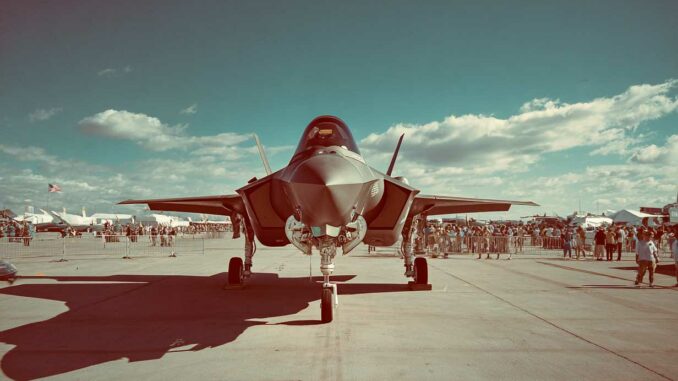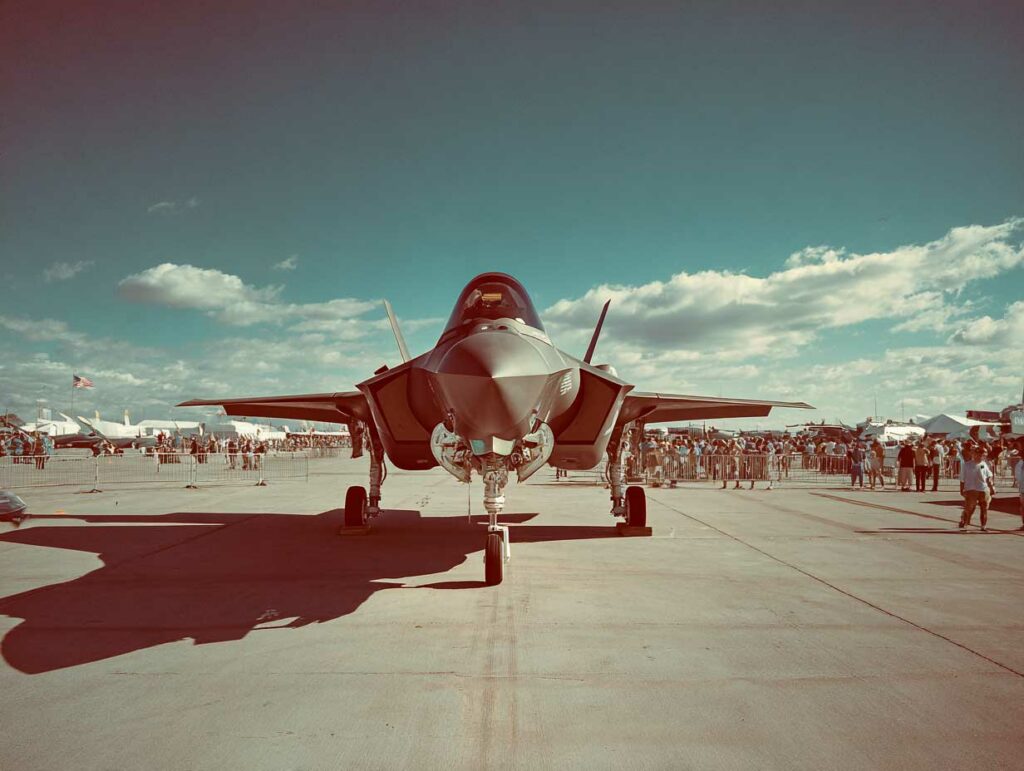
European countries that do not have the F-35 want to host maintenance and repairs for the stealth fighter to strengthen NATO interoperability and resilience.
At the 2025 Royal International Air Tattoo, Lockheed Martin confirmed that several NATO member countries that have not ordered the F-35 have expressed interest in hosting maintenance facilities on their territory. The aim is to enable allied F-35s to land, receive local logistical or technical support, and take off again immediately operational. This initiative aims to extend the resilience capabilities of the Atlantic alliance by offering more repair and refueling points outside the main bases.
At the same time, Lockheed is stepping up its industrial investments in Europe to increase production of PAC-3 Patriot missiles, develop partnerships with local suppliers, and reduce lead times between requirements definition, prototyping, and production. Finally, recent tests have demonstrated that the F-35 can transmit tactical data in real time to older fighters such as the F-16 using advanced liaison equipment such as the Sniper Pod.
F-35 bases in non-operating countries: a strategy for operational continuity
European NATO member countries without F-35s in their fleets nevertheless wish to host technical facilities dedicated to the support and maintenance of these stealth fighters on their soil. This information was shared by Michael Williamson, president of Lockheed Martin International, at the 2025 Royal International Air Tattoo (RIAT).
The request is not anecdotal. It responds to a logic of enhanced interoperability within the alliance, but above all to an operational need for tactical resilience. In concrete terms, this means that an F-35 engaged in an operation on NATO’s eastern flank—for example, in Poland or the Baltic states—could divert to a base in a neighboring non-operating state for refueling, rapid repair, or reloading, without having to rely on the usual hubs further away.
This configuration would offer several advantages:
- Reduced turnaround times for damaged aircraft,
- Reduced logistical vulnerability by diversifying support points,
- Stronger NATO cohesion by involving more countries in operational support.
However, this would require heavy investment in hangars, certified spare parts, personnel trained to Lockheed standards, test platforms, and diagnostic tools adapted to F-35 systems. The cost of such infrastructure generally exceeds $70 million for an intermediate base with partial MRO (maintenance, repair, operations) capability.
But interested countries see a double benefit: direct participation in NATO’s collective posture and preparation of their industrial ecosystem for the potential arrival of future 5th or 6th generation programs.

Data transmission between NATO aircraft: the F-35/F-16 gateway
Beyond physical platforms, Lockheed Martin presented the results of recent exercises demonstrating the ability of an F-35 to transmit tactical data to older aircraft, notably the F-16.
This communication relies on the Sniper Advanced Targeting Pod, developed to improve the link between aircraft and ground units. With this system, an F-35 can transmit:
- Real-time targeting data (GPS coordinates, radar signature, prioritization),
- Mission instructions (order to engage, route, zone assignment),
- Electronic warfare elements, enabling another aircraft to respond to jamming detected by the F-35.
These exchanges take place via encrypted and jamming-resistant networks, using the MADL (Multifunction Advanced Data Link) protocol on the F-35 side and a compatible format via a gateway on the F-16 side. The benefits are significant: 4.5-generation aircraft such as the F-16, which are widely used by NATO, can now be integrated into the rapid decision-making chain without requiring major upgrades to their onboard equipment.
For air forces, this compatibility offers operational extension of their existing fleet. A squadron of F-16s can act in tactical pairs with an F-35 at the head of the network, which acts as an advanced sensor and tactical relay. This avoids relegating older aircraft to a mere secondary role, while maintaining the integrity of the command and control network.
Towards a transformation of Lockheed’s industrial model in Europe
Williamson also emphasized the need to evolve defense industrial processes. The old model—several years to define a need, several more to develop a prototype, then mass production—is no longer suited to today’s tensions. The president of Lockheed Martin International spoke of a strong desire to drastically shorten development cycles.
To achieve this, Lockheed has mapped suppliers in 70 countries, including companies outside the defense sector. The goal is to identify agile industrial players capable of integrating dual technologies (cyber, AI, communications) into military manufacturing processes. This network would also help limit the effects of saturation or shortages seen since the COVID-19 crisis and the war in Ukraine.
On the missile front, Lockheed has increased production of PAC-3 MSEs by more than 30%, with a long-term goal of doubling the rate. These missiles are crucial for the Patriot batteries used in Poland, Germany, and Romania, among other countries. Their electronic components and propulsion systems require a diversified supply chain, which is currently fragile.
This strategy aims to make the group more responsive and flexible, while promoting local manufacturing, particularly in Europe. Several countries, including Romania and Slovakia, have been approached to host industrial capabilities.
A strategic turning point for NATO and non-operators
What this series of announcements reveals is the emergence of a new role for European countries that do not operate the F-35. They are becoming logistical players in an integrated air architecture. This position is not merely symbolic. It comes with technical, industrial, and diplomatic responsibilities.
By joining the F-35 maintenance chain, these countries are strengthening their military credibility while preparing for an industrial transition to future generations of air combat systems. For nations that have not yet invested in stealth fighters, this is indirect access to key technology through logistics and interoperable communications.
However, this raises several challenges:
- Partial technological sovereignty, since expertise remains controlled by Lockheed Martin.
- Dependence on US standards in communication architecture.
- Risk of industrial fragmentation if investments are not coordinated at the European level.
But in a context of growing threats on NATO’s eastern flank, these choices may appear to be pragmatic solutions, improving the effectiveness of the allied system without waiting for the FCAS program to enter service, which is not expected until 2040 at the earliest.
War Wings Daily is an independant magazine.